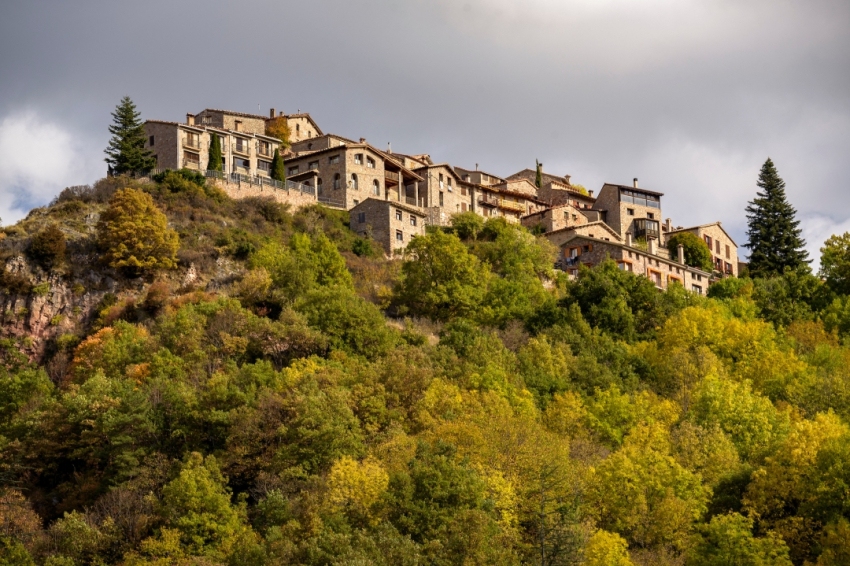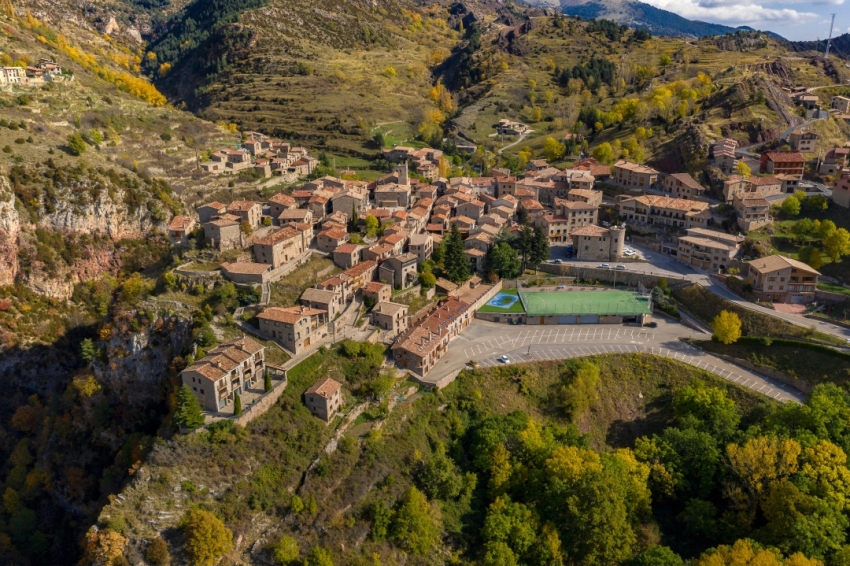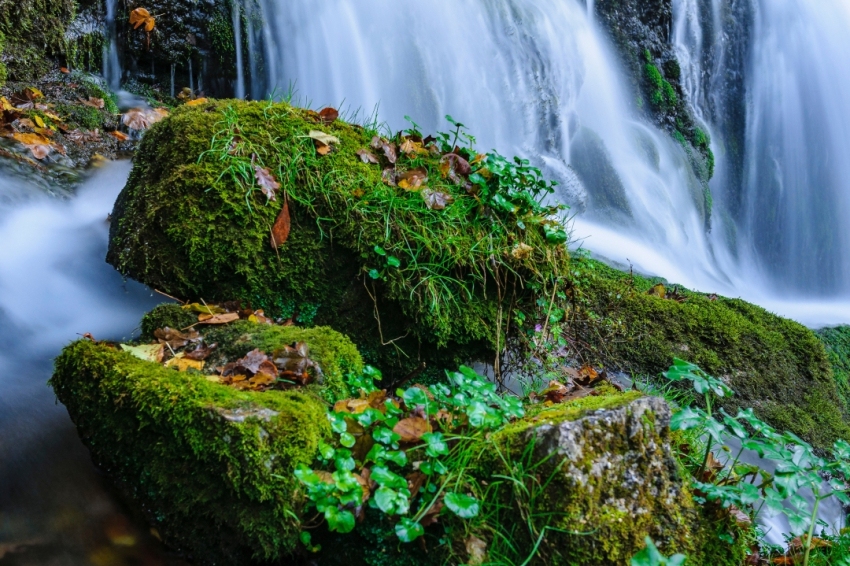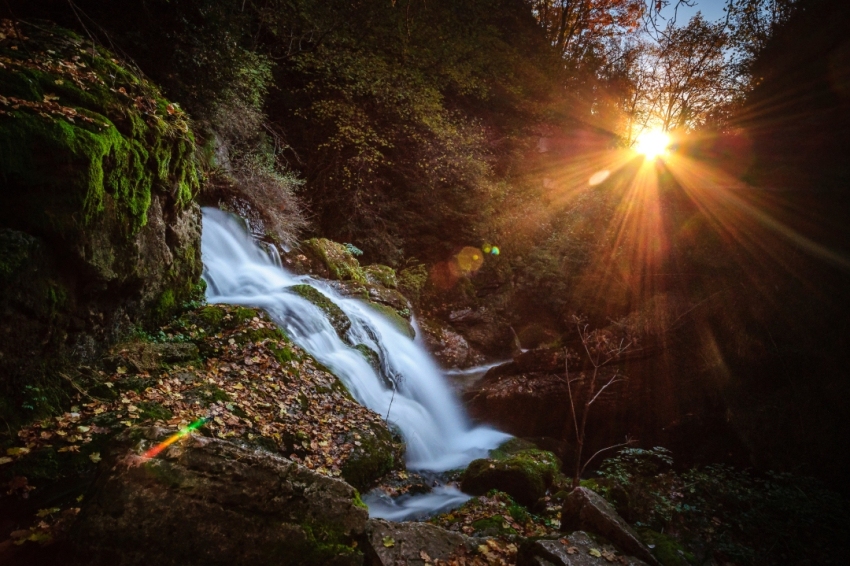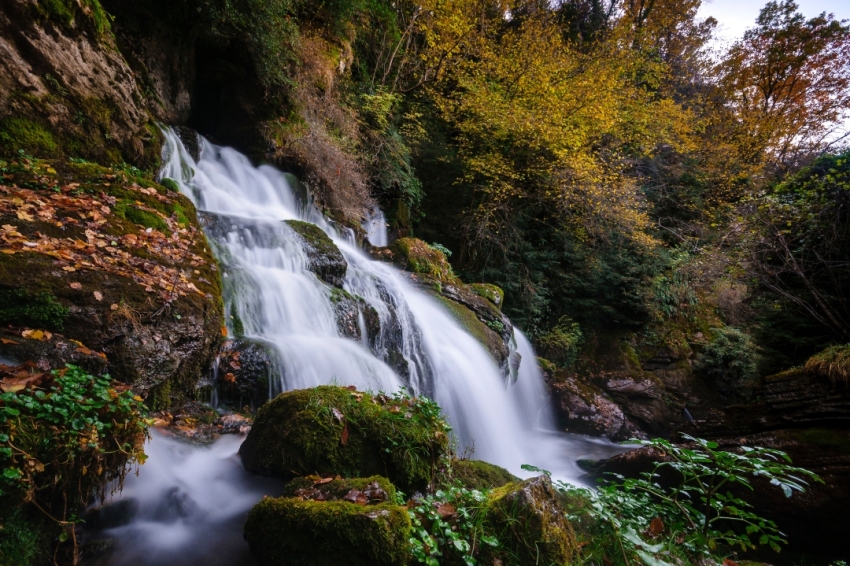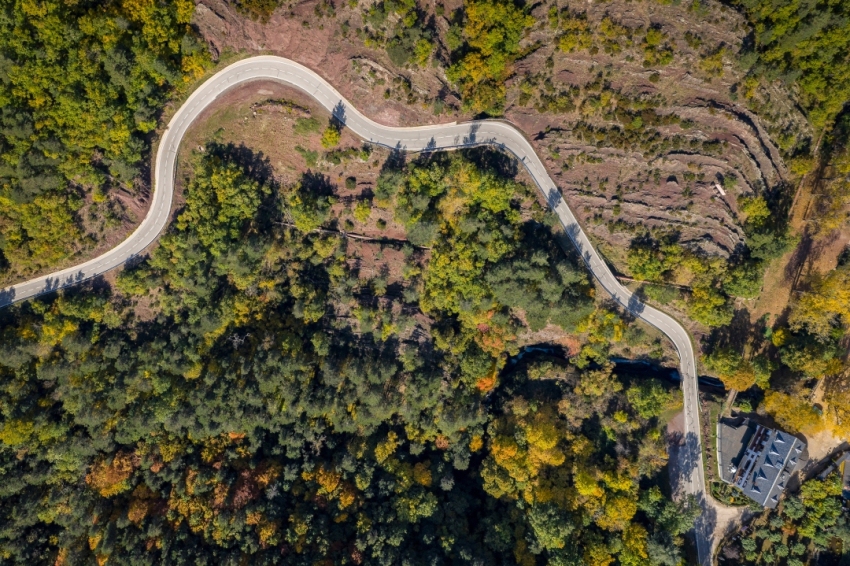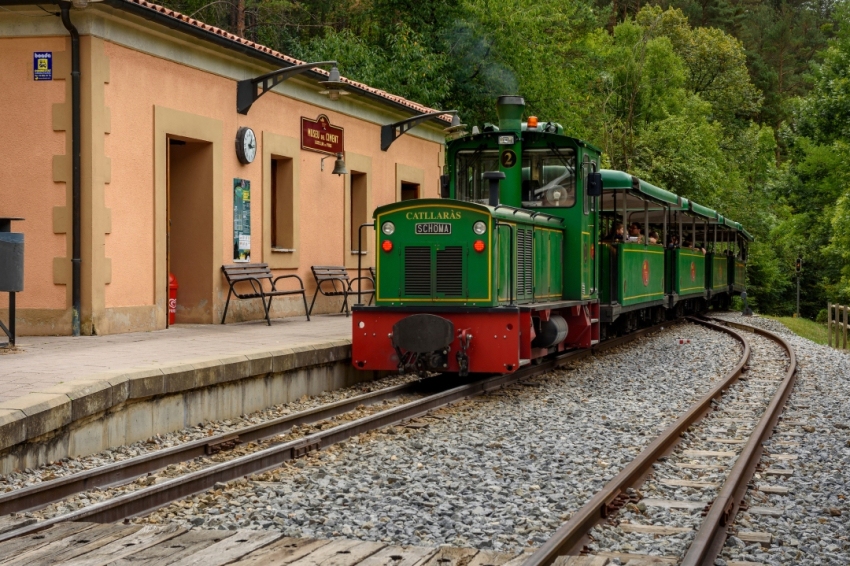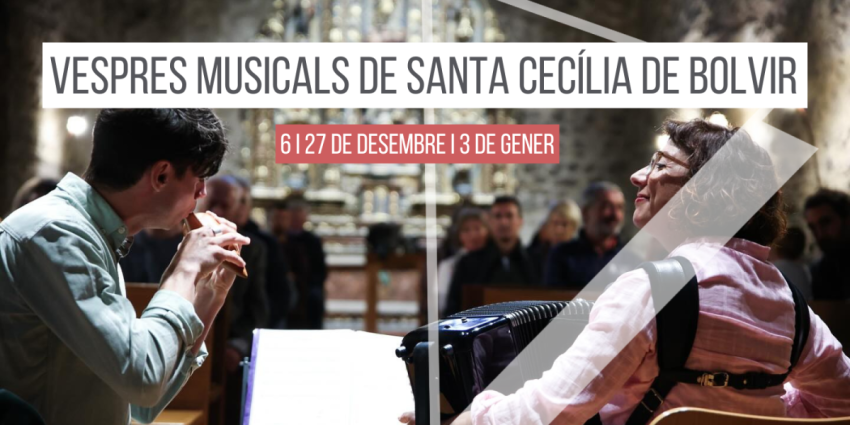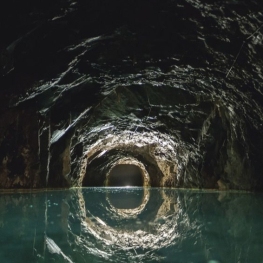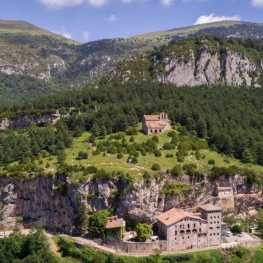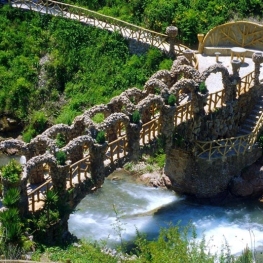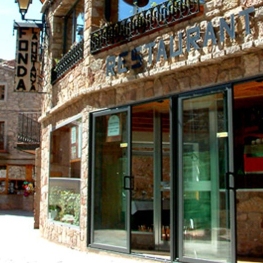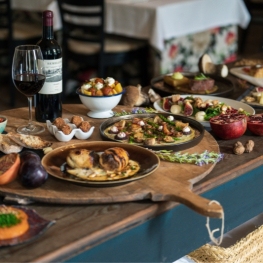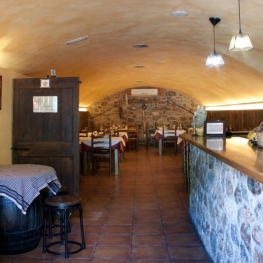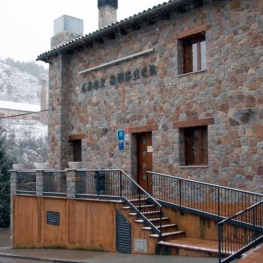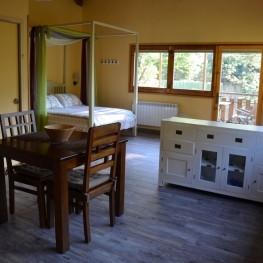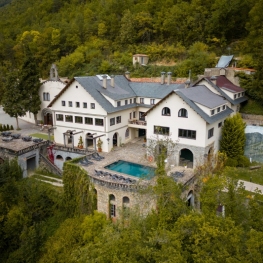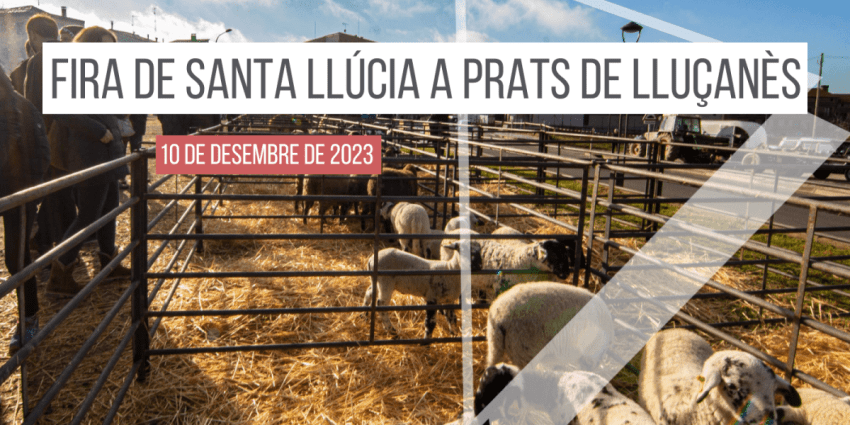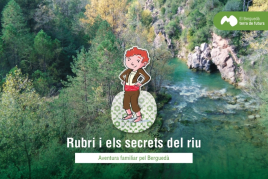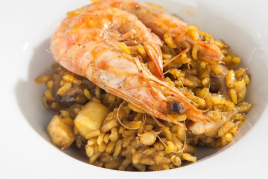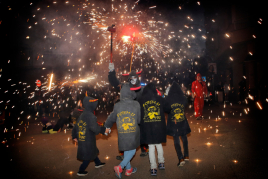Castellar de n'Hug
Castellar de n'Hug is a municipality in the Berguedà region located on the border with the Ripollès region.
The etymological origin of Castellar de n'Hug has two parts: on the one hand, Castellar, which seems to indicate that it comes from the word "castle" (completed castle), and the second, which is more uncertain, is either from the proper name Hug or Uc, or from the word nuce or nuc, which means watercourse, which would make perfect sense, considering the source of the river.
One of Castellar de n'Hug's main attractions is, without a doubt, the source of the Llobregat River, known as the Fuentes del Llobregat. It's an attractive place that draws many tourists due to its enviable crystal-clear, cold waters fresh from the mountains. Everyone surrenders to its beauty and its touch. Everyone who goes decides—at one point or another—to touch the water. In summer it feels cold, and in winter it's even colder. However, it's still a pleasure to enjoy the experience of feeling the water from the rain and the melting snow in liquid form.
As for religious buildings, Castellar de n'Hug has two churches: Santa María de Castellar de n'Hug and San Vicente de Ruso. The first is of Romanesque origin and still preserves the four-story bell tower with semicircular arched windows, although it was transformed in the Neoclassical period. The second also belongs to the Romanesque style, in this case dating from the 11th century and with a single nave with a barrel vault and a semicircular apse. The exterior has Lombard decorations. It has currently been renovated and its interior houses paintings from the 13th and 14th centuries.
In the area of unique buildings, two museums are worth highlighting. The Shepherd's Museum or House, which tells the story of this profession that is being lost over the years. And the Asland Cement Museum, located in Clot del Moro. This former Modernist-style cement factory, built in 1901 by Eusebi Güell, was converted into a museum in 1992. It was the first industrial cement factory in Catalonia, operating until 1975. In 2005, it was declared a Cultural Asset of National Interest and is included in the Museum.
Castellar de n'Hug is also famous for the International Shepherd Dog Competition. This competition has been held since 1962, when a group of shepherds decided to get together to compete to see who had the best shepherd dog. Since then, it has been held on the last Sunday of August and is part of the Catalan Countries Shepherd Dog Competition Championship.
Places of interest
Sources of the Llobregat
The Fuentes del Llobregat, located near Castellar de n'Hug, are the source of one of Catalonia's most important rivers. They can be reached on foot along a marked trail showcasing the local flora and fauna. The site is especially spectacular during periods of abundant water, with a waterfall that springs directly from the cliffs. Further downstream are a snack bar with a picnic area, an old forge, and a flour mill converted into a hydroelectric power plant.
Asland Cement Museum
At the end of the 19th century, Count Güell promoted the construction of Catalonia's first Portland cement factory in Clot del Moro (Castellar de n'Hug), utilizing the local limestone. After nearly 75 years of operation, the Asland factory closed about three decades ago due to its high production costs.
Today, the building has been converted into a museum, part of the Science and Technology Museum of Catalonia. The exhibition provides an insight into the cement manufacturing process, the role of its promoters, such as Eusebi Güell and Rafael Guastavino, and the history of the people who worked there, preserving the legacy of a symbol of the country's industry.
Shepherd's Museum
The Shepherd's Museum is a space dedicated to preserving and disseminating the memory of the shepherd's trade, a traditional activity that is being lost. The museum offers information on the past, present, and future of this profession, as well as a collection of ancient objects related to mountain life: tools, ornaments, and pastoral implements. It also acts as a documentation center and promotes the historical memory linked to the world of livestock farming.
Cadí-Moixeró Natural Park
The area surrounding Castellar de n'Hug offers excursions and itineraries with spectacular landscapes and a wealth of natural beauty. Part of the municipality is part of the Cadí-Moixeró Natural Park, with high mountain meadows and forests where you can observe chamois, deer, foxes, wild boars, badgers, birds of prey such as vultures, and many other birds such as owls, eiderdowns, and blackbirds.
Saint John of Cornudell
A small church of Pyrenean Romanesque origin (9th century), located on a hilltop. It has a single nave with a vault reinforced by transverse arches and a mixed roof: one part with rusticated slabs and the other with tiles added later. The clocher is a bell gable. The walls show evidence of two construction phases, probably due to a later extension.
Saint Vincent de Rus
Sant Vicenç de Rus was an ancient settlement that became a district of Castellar de n'Hug, based on a parish dedicated to Saint Vincent. Initially independent, it became dependent on Castellar in the late Middle Ages.
The church, consecrated in 1006 by Ot de Pallars, is a 12th-century Romanesque building built on early medieval remains. It has a single nave, an apse with a double-splayed window, and a square bell tower. It houses a baptismal font, an image of the Virgin, a unique candelabra, and Gothic and 12th-century murals (the latter in reproduction).
It is owned by the Bishopric of Solsona and was restored by SPAL between 1983 and 1988.
Saint Mary of n'Hug
The 11th-century parish church of Santa Maria is of Romanesque origin, although it has undergone several renovations. It retains original elements such as the nave to the transept, the entrance portal with semicircular arches decorated with ironwork, and the bell tower with voussoired windows, some of which are blocked up.
However, much of the current building is neoclassical, except for the door, the bell tower and a fragment of the interior wall, which maintain the Romanesque style.
Cement Train
The Cement Train is a historic line that connected the Asland cement factory in Castellar de n'Hug with Guardiola de Berguedà, connecting with the railway to Berga and Manresa. It currently runs for 3.5 km and has four stops: Pobla de Lillet, Pobla Centre, the Artigas Gardens, and the Cement Museum - Castellar de n'Hug.
What to do
Mina de petroli dels "Francesos" de Riutort
Guardiola de Berguedà (a 8.7 Km)Located within the perimeter of the Cadí-Moixeró Natural Park, it is one…
Terra de Comtes i Abats a Gombrèn
Gombrèn (a 7.3 Km)Land of Comtes and Abats offers you a lot of proposals to…
Jardins Artigas
La Pobla de Lillet (a 4.9 Km)The Artigas Gardens, designed at the beginning of the 20th century by…
Where to eat
Hostal la Muntanya
Castellar de n'HugFamily hostel located in Castellar de n'Hug. It offers various accommodation options,…
La Santa Restaurant
Ribes de Freser (a 11.4 Km)Our fires cook locally sourced food, harvested using traditional methods. We support…
El Recó de l'Avi
Guardiola de Berguedà (a 12.8 Km)Typical homemade cuisine, with oak-grilled meats, a wide variety of tapas and…
Where to sleep
Hostal la Muntanya
Castellar de n'HugFamily hostel located in Castellar de n'Hug. It offers various accommodation options,…
Hotel Casa Duaner
Guardiola de Berguedà (a 12.8 Km)The Casa Duaner Hotel in Guardiola de Berguedà offers modern facilities, a…
Apartaments del Bosc
Ribes de Freser (a 12.4 Km)The apartments are two semi-detached cottages located on the family estate. They…
Angelats Hotel
Ribes de Freser (a 11.4 Km)Surrounded by an ancient forest, with wide paths to explore, the 20…

